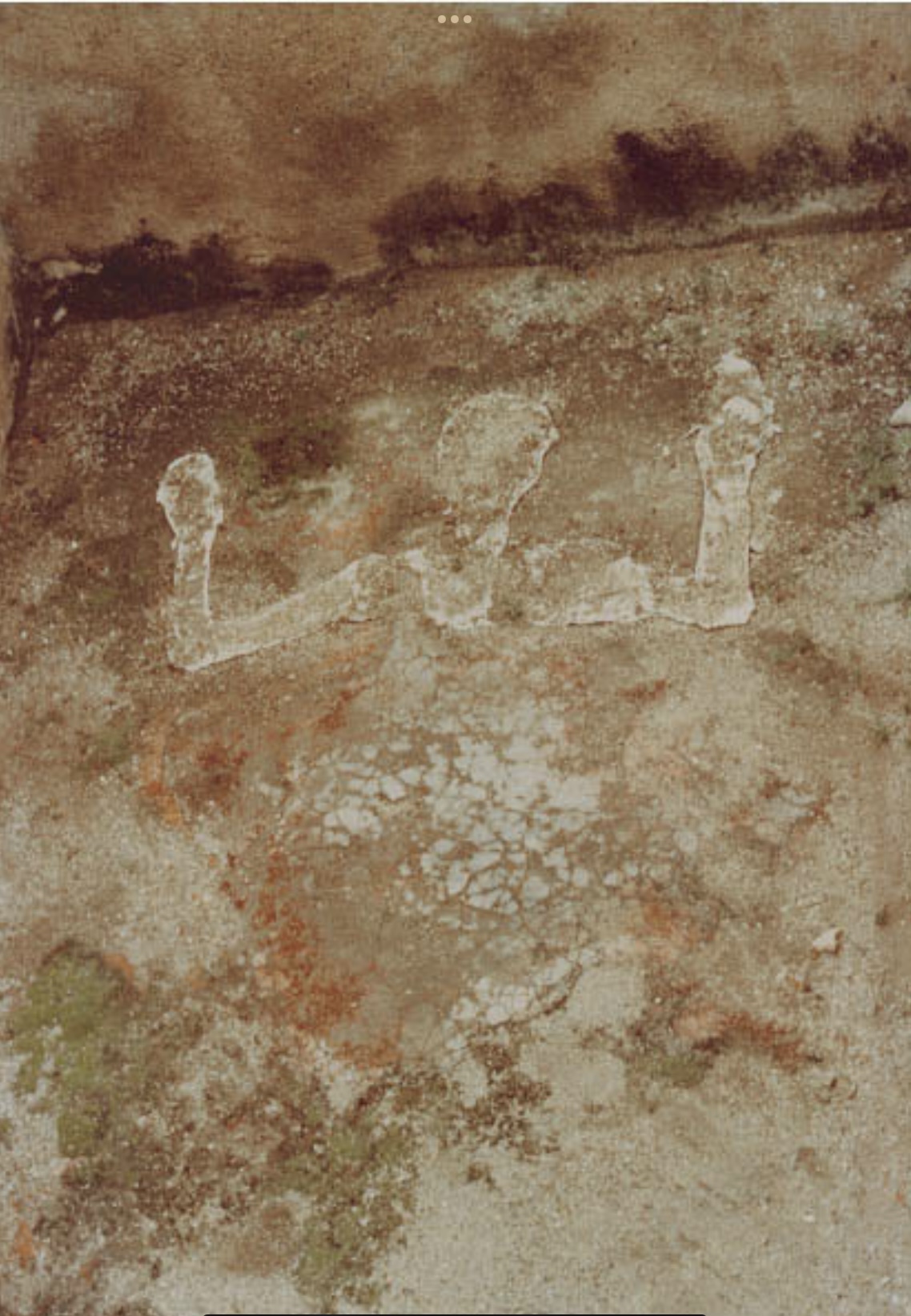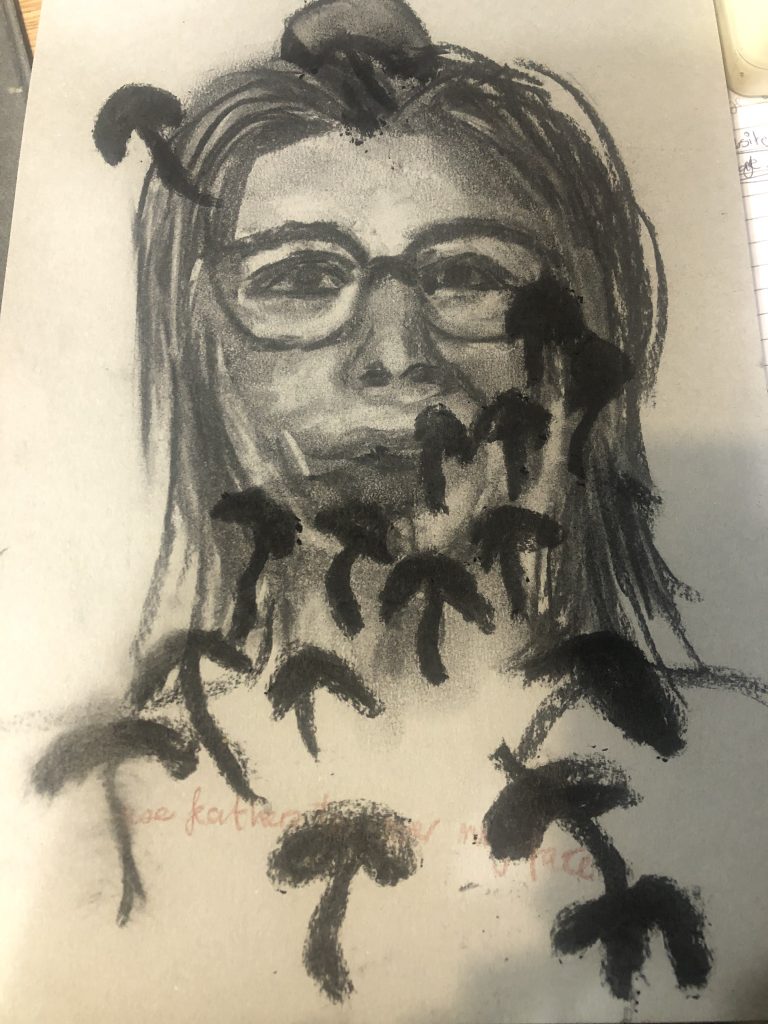My tutor suggested I look at this Cuban-born artist after reflecting on the ongoing nature of my making. She told me to look at Earthbound by Ana Mendieta as connection to explore further thinking about care and healing in my practice. Earthbound was an exhibition of 14 works shown in 2019. The collection at Galerie Lelong, in collaboration with the estate of Ana Mendieta, was established in Belgium forty-three years after she performed at the ICC in Antwerp in 1976. As an artist, her concern was about the fragility of our ecosystem, especially about the effects of technological advancement. I learned that the idea of Earthbound comes from Bruno Latour’s book, Facing Gaia (2017). To him, the Earthbound are those occupied by the Earth, in contrast to humans who inhabit the Earth disrespectfully. Earthbound, like Gaia, has agency and is active. Latour envisioned that artists could help humans to develop their imagination in this regard.
I found an artist’s statement written by Mendieta in 1981: “I have been carrying out a dialogue between the landscape and the female body (based on my own silhouette) I believe this has been a direct result of my having been torn from my homeland (Cuba) during my adolescence. I am overwhelmed by the feeling of having been cast from the womb (nature). My art is the way I re-establish the bonds that unite me to the universe. It is a return to the maternal source.” (Broad Stroakes:15 Woman who made art and made history, p 223-224)
On the MOMA site I contemplated a quote by the artist: “To question our culture is to question our own existence, our human reality,” the artist Ana Mendieta once said. “This in turn, becomes a search, a questioning of who we are and how we will realize ourselves.”1
As I read about her childhood, it became clear that being displaced without her parents as part of Operation Peter Pan in the US; she was part of 14,000 children who arrived in the USA without her parents. She was first torn from her homeland during adolescence and reunited with her parents later. Her work is confronting and searching to reconnect – about loss and how we connect with nature through a direct bodily experience. I value the ideas of self-representation and connection and that nature and its elements have agency.


In Earthbound, the experience is a bodily connection with nature as this artist shares her fascination with the elemental energy of the earth, water, air and fire. I like that she acknowledges this agency and went beyond ideas about religion politics and history in her work.
It seems this female artist had a particular way of merging performance, earth art and culture; her body of work is composed of performances, films, installations, sculptures, photographs and drawings. She investigated history, gender and culture in her work. She used her body and an imprint of its silhouette to create a dialogue between her and nature. It seems recurring elements in her career were to be immersed with materials like feathers, water or soil. She also used blood and gunpowder which were seen as essential elements in rituals of an Afrd-Cuban religous group, Santeria. This could seen as a primitive need to reconnect with the natural elements and/or relate to ancient practices from her own past. Her work is closely associated with land art and performance art.
How can I apply this artist way of work in my research?
Looking at her making, I see the idea of being connected with nature through performance and land art. Her work opens ways of how we relate to our surroundings. Apart from sculpture which was done in the form of photography or film, her work is also about documentation. This artist had made more than two hundred works where she utilized the earth as a key component.
I contemplate loss and how my making is a way of me finding my way to connect with Nature and Humanity. I also consider the ideas of female loss and search for maternal power and connection with the landscape. In the chapter I read on the life of Ana Mendieta the author discuss how landart was a powerful new idiom in American sculpture in the early 1970’s, but tended towards being masculine, massive, requiring use of big machines and egos. A reference was made to Sprial Jetty by Robert Smithson (looked at it in my Practice) and Walter De Maria’s The Lightning Field.
I like to work around ideas of interconnectedness and explore the need for collective action within these challenges. For Latour, Gaia is an interconnected Earth system; Ubuntu emphasize interconnectedness by using the idea of, I am because we are. (communal relationships and collective responsibilities) I can relate care with responsibilities towards Earth/Soil/Nature as a broader ecological community. We must also acknowledge our dependence on and impact on the Earth’s systems. Ubuntu deals with principles of caring for vulnerable and marginalized members of our society, which is also extended to environmental justice.

Can I view my making as process art and that I am primarily concerned with the emotional qualities and ecological challenges we face?

Bibliography
https://www.moma.org/artists/3924
Quin, Bridget 2017 Broad Strokes: 15 Women who mad art and made history (in that order) Chronicle Digital book read on SCRIBD (Chapter13: Ana Mendieta , p 219 -226)